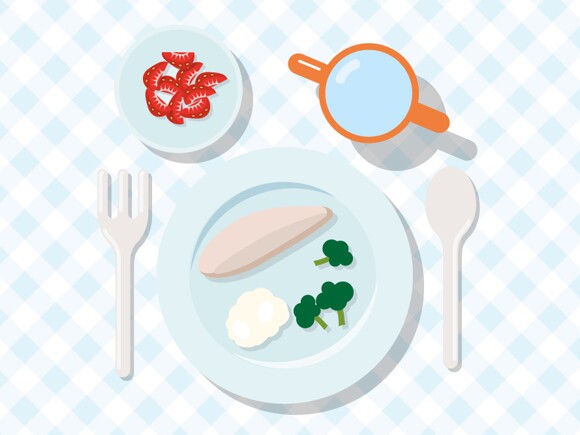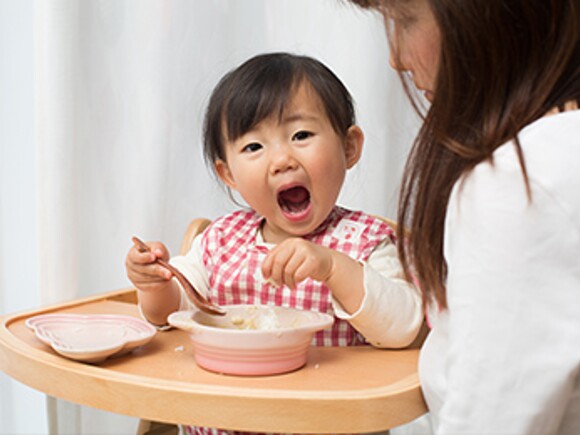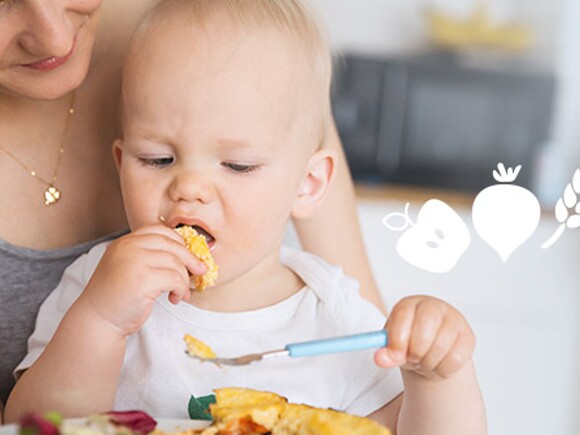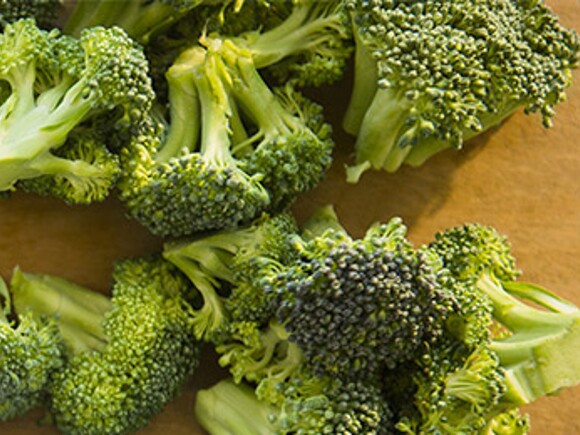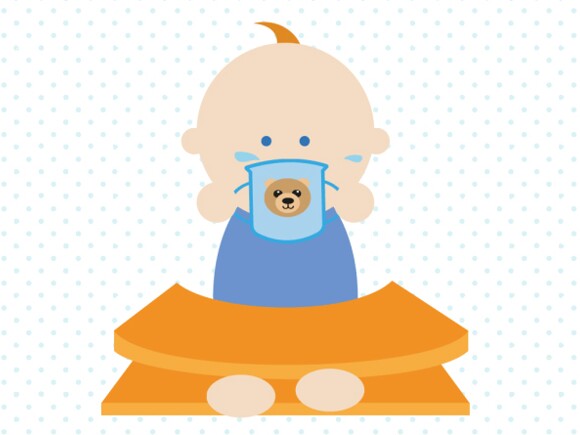Ascorbic Acid (Vitamin C)
Ascorbic acid, also known as Vitamin C, plays many important roles in the body, especially for children. It acts as an antioxidant and boosts immunity, increases protein collagen formation and enhances iron absorption.
Vitamin C is a water-soluble vitamin which means any excess will be safely excreted from the body. The recommended daily allowance (RDA) of Vitamin C for children from 7 – 24 months is 35-45mg/day.
Vitamin C can be found abundantly in all fresh fruits and vegetables, especially if they are brightly coloured. It is highest in citrus fruits such as oranges and grapefruit, strawberries, papaya, broccoli, capsicum and tomatoes.
Bowel Habits
Bowel movements are important to your child’s health. Regularity varies from child to child. Some children go more than once a day, while others may skip a day or two. The most common problems with bowel movements are constipation and diarrhoea.
You can encourage healthy bowel habits in your child by:
- Eating foods that are high in fibre such as whole grains found in wholemeal bread and brown rice, fresh fruits and vegetables.
- Drinking more water.
- Staying active throughout the day. Regular movement and activity help keep bowels working well.
- Not using negative words like “dirty” or “stinky” as they can make your child feel self-conscious about going to the toilet.
- Teaching your child not to hold a bowel movement.
- Explaining that regular bowel movements are normal and important for good health.
C(alcium) and Vitamin D
Calcium is a mineral that is required for healthy bones and teeth. Dairy foods such as milk, cheese and yoghurt are the best sources of calcium. Other foods that are high in calcium are ikan bilis, sardines with soft edible bones, dark green leafy vegetables and beans.
Vitamin D is also essential for bone and teeth health. It regulates calcium and phosphate in the body. A lack of Vitamin D can lead to bone deformities such as rickets in children. Vitamin D is found in fish such as salmon, mackerel, tuna as well as in eggs and cheese. Sunlight exposure on the skin is the main source of Vitamin D.
Think of your bone as a bank account where you make “deposits” and “withdrawals” of bone tissue. During childhood and adolescence, you make more “deposits” than “withdrawals” making it a critical phase to achieving peak bone mass. A lower bone mass may predispose a child to fractures or an earlier onset of osteoporosis. Therefore, maintaining adequate calcium and Vitamin D intake during childhood is necessary for building and maintaining bones and teeth. Vitamin K2 is also important to direct Calcium to bone formation (see Vitamin K).
D(HA)
Is it true that the more DHA my child gets, the smarter my child will be?
Our brain is made up of nearly 60% fat. These are called lipids which are naturally occurring compounds consisting mainly of fats, sterols and the fat-soluble vitamins; Vitamins A, D, E and K.
Docosahexaenoic acid (DHA) is a lipid that has shown to influence structural and developmental function of the brain and hence, is essential for the brain growth and development.
Although the potential benefits of DHA have been widely acknowledged, there is no concrete evidence to suggest that larger amounts of DHA mean higher performance in cognitive functioning such as attention and learning. However, DHA must come with EPA, phosphorus and cholesterol in smart food like wild fish and free-range chicken egg (yolk).
E(gg)
Eggs are a natural source of protein, vitamins and minerals making it an important food for your child’s growth. Protein is essential for healthy growth. The key value is that egg contains smart fats: DHA, EPA, phosphorus and cholesterol.
While eggs are highly nutritious for your growing child, there is also a chance that he/ she may be allergic to it. Eggs must be well-cooked and introduced only after 6 months. Mash them and add them in very small amounts to their meal. Parents should also monitor carefully for any signs or symptoms of an allergic reaction. Seek advice from your pediatrician on the introduction of eggs to your child if possible.
F(ussy eater)
Do you find that your child is a fussy eater?
Although some children remain “picky” for years, but your child’s picky eating may just be a phase. Children are naturally “neophobic” after 18 months, meaning they’re afraid of anything new and prefer eating foods they’re used to.
Here are some tips for parents of fussy eaters:
- Instead of giving up on a rejected food, try preparing it in a different way and offering it again. It takes up to 10 or more exposures for he/she to accept a new taste.
- Change the presentation or form of the food that may appeal to your child. For example, a child might refuse raw carrots but might enjoy cooked or grated carrots.
- Social eating is helpful to avoid focusing on child's difficulty.
G(ut health)
Gut health is essential for your child’s overall health. A healthy digestive tract is efficient at absorbing nutrients from food, increases immunity against bacteria and regulating a wide variety of hormones. It is important to start good eating habits to promote a healthy gut from young as more health problems arise from poor intestinal health.
Probiotic rich foods such as yoghurt, miso and sour dough breads can help to improve gut health. Yoghurt is one of the best sources of probiotics as it contains lactobacillus or bifidobacteria. Look for the words “live or active cultures” on the label of your preferred yoghurt.
H(ealthier Choice) Symbol
The Healthier Choice Symbol (HCS) is awarded to food products which meet strict nutritional standards set by the Health Promotion Board. The HCS serves as a guide for consumers to identify healthier food and beverage products. Thus, products labelled with the HCS logo are regarded as healthier options in that category.
Food products awarded the HCS are generally:
- lower in fat, saturated fat and trans fat
- lower in sodium
- lower in sugar
- higher in calcium
- higher in dietary fibre (HealthHub, 2015)
As an example, children’s milk powder (1-3 years old) displaying the HCS for lower in sugar should contain ≤0.5g/100g of total sugar and more calcium (≥70mg/100ml) compared to other brands of regular children’s milk powder.
For more information on the HCS guidelines: visit https://www.healthhub.sg/live-healthy/211/make_healthier_choice.
I(ron)
Is your child getting enough iron?
Every red blood cell in the body contains iron in the form of haemoglobin to transport oxygen around the body. Without enough iron, the body cannot make enough haemoglobin and makes fewer red blood cells, depriving tissues and organs of oxygen. Iron deficiency in children can affect growth and learning ability.
The best food sources of iron are red meat and poultry which contain haem iron, the most readily absorbed form of iron. Non-haem iron, the less readily absorbed form of iron is found in dark leafy vegetables, iron-fortified cereals, wholegrains, beans and lentils. To enhance iron absorption, eat foods that are high in Vitamin C such as oranges, papaya, capsicum and tomatoes. All fresh fruits and vegetables are good sources of Vitamin C.
If you are concerned that your child isn’t getting enough iron, make sure you talk to your paediatrician.
J(ourney)
At Nestlé, we understand that parenthood is a journey for life. The challenge of raising healthy kids is perhaps greater than ever. We acknowledge that we do not have all the solutions. By understanding the latest scientific findings and receiving practical advice on what and how to feed your baby, this challenge can become an incredible opportunity to help your child reach his/ her full potential. With 150 years of expertise in nurturing healthier generations, NESTLÉ START HEALTHY STAY HEALTHY was created to help guide parents through this journey. It is an education program for parents and caregivers to promote healthy nutrition in the crucial first 1000 days.
For information on nutrition and parenting tips, browse our website to find out more.
(Vitamin) K
There are two forms of Vitamin K; K1 and K2.
Vitamin K1 is a fat-soluble vitamin that is necessary for proper blood clotting to prevent excessive bleeding and wound healing especially for curious and active toddlers who may be prone to bumps and bruises (The California Department of Public Health, n.d.). Vitamin K2 is also essential for bone health.
Vitamin K1 is found in foods such as:
- Fortified formula milk
- green vegetables - such as broccoli, asparagus and spinach
- vegetable oils
- cereal grains
- beans and soybeans
Vitamin K2 is obtained from meats, cheese, eggs through synthesis by bacteria found in the intestinal tract.
L(actose)
Lactose intolerance, contrary to popular belief, is not a milk allergy. While they may share similar symptoms, they are completely different conditions.
Lactose intolerance is a common digestive problem when the intestines cannot easily digest lactose, a naturally occurring sugar found in milk and dairy products. Those with lactose intolerance either lack the digestive enzyme lactase or do not make enough of it. This can lead to flatulence, diarrhoea and a bloated stomach.
A milk allergy is caused by the immune system reacting abnormally to lactose (NHS Choices, 2016). This is a serious condition. A milk allergy tends to appear within the first year of life. With an allergy, even a tiny exposure can trigger symptoms like vomiting, persistent colic, eczema, wheezing and shortness of breath.
The main difference is that those with lactose intolerance may consume small quantities of lactose without experiencing any problems, although this varies with each child. If in doubt, speak to your paediatrician.
Multivitamins
My child takes a daily multivitamin, so they’re getting all the nutrients they need. This is a common misconception that must be cleared. Multivitamins provide only some of the vitamins and minerals a child needs for good health. Multivitamins are intended to supplement a balanced diet, not substitute it. Certain nutrients, such as Vitamin C and potassium, are found abundantly in fruits and vegetables, but not in significant amounts in a basic multivitamin.
You can continue to give your child a multivitamin, but do encourage them to eat a variety of foods. Use food colours as a guide. Generally speaking, the more naturally colourful the foods are, the wider range of nutrients they contain. By keeping their diet colourful, you’ll not only give them the nutrients they need, but the variety will keep them interested in food.
Think of colourful vegetables such as carrots, broccoli and eggplant; fruits such as berries, oranges and apples; and lean meats, salmon, poultry, beans and tofu for protein. Even snacks such as almonds, walnuts, and whole-grain crackers have more colour than highly-processed chips.
By Dr Ang Poon Liat, Paediatrician
Thomson Paediatric Centre
Discover more about the N to Z of Nutrition here!








